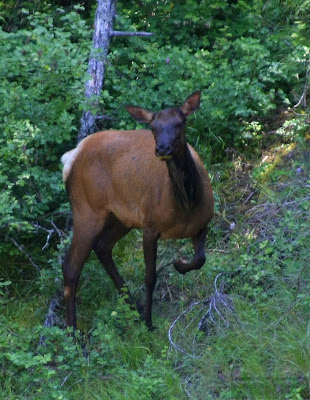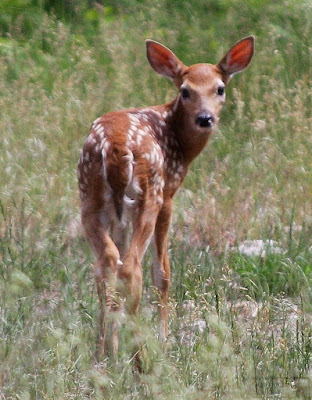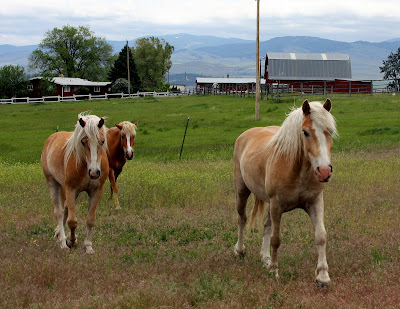These photos were taken fairly high up on the south side of Sweathouse Creek. My puppy and I walked through thick beargrass on our way up a ridge and flushed this hen and her clutch of at least 10 chicks. They flew into the trees before she did. She waited for the last one to fly before she flew into this burned tree where she "froze." She sure is camoflauged.
The Dusky Grouse, Dendragapus obscurus, is a species of forest-dwelling grouse native to North America's Rocky Mountains. It was formerly known (until 2006) as the blue grouse and is the second largest grouse on our continent, measuring 12 to 15 inches in length. Only the Sage Grouse is bigger.
- Montana Field Guide for Dusky Grouse by Montana Fish, Wildlife and Parks
To see all the photos in a new window click Merle's SmugMug Dusky Grouse link.










